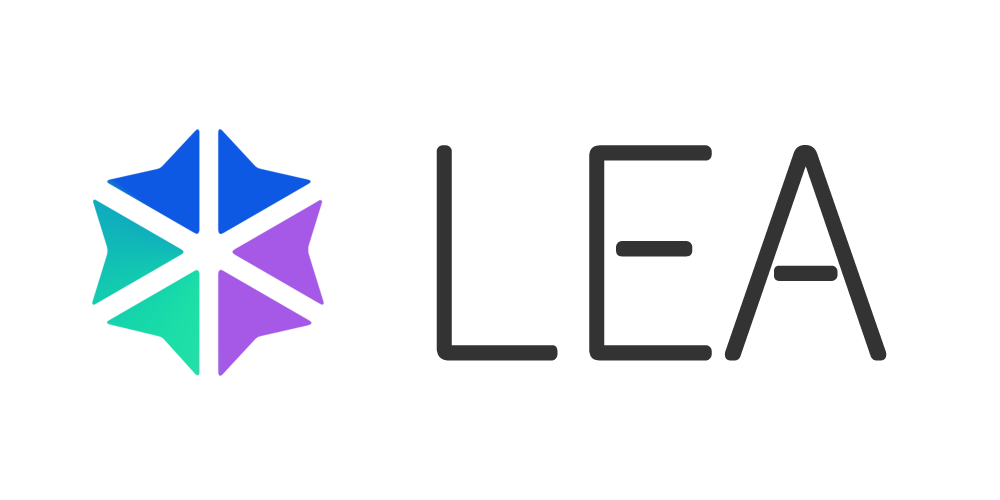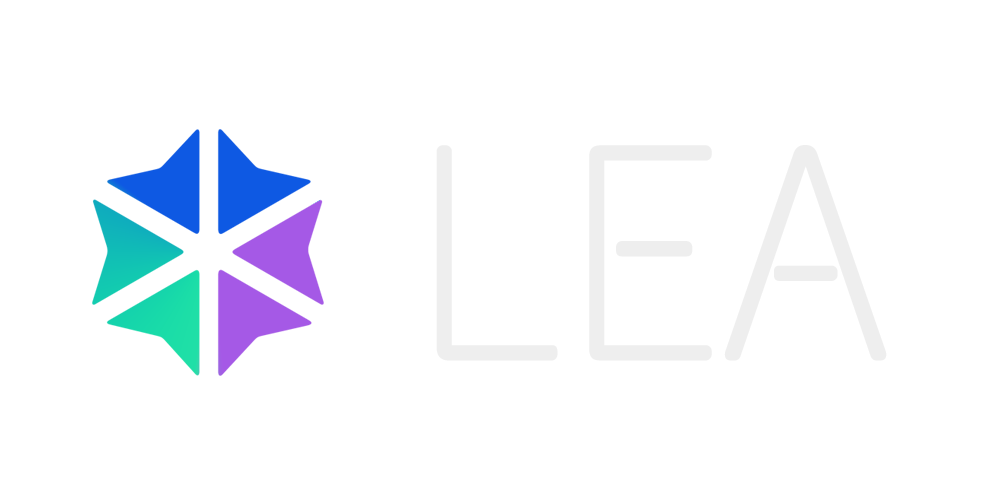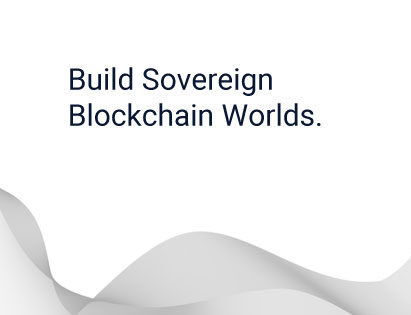Modular Blockchain Architecture: Quantum-Resistant Security for the Future of Web3
Blockchain began with a simple ambition: create trust without intermediaries. Bitcoin proved that value could move freely. Ethereum expanded this into programmable systems. Yet over time, structural limits became clear: congestion, high fees, rigid governance, and security that may not withstand the coming quantum era.
The next step requires not just faster networks but a new architecture.
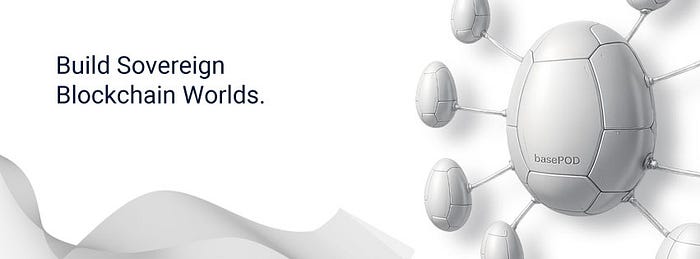
The Limits of Monolithic Chains
Monolithic blockchains, which were the first kind of blockchain systems, put all their basic features into one single layer of the blockchain.These functionalities include transaction execution, consensus mechanisms, and data availability. Bitcoin is a prime example of a monolithic blockchain. (Source: Coinbase)
One chain, one rulebook, one bottleneck. Every application — from finance to gaming — must share the same execution environment, fee markets, and governance cycles.
This slows innovation. A small change requires agreement from the entire network. Developers face friction; users bear the cost.
Modularity: Execution Without Constraint
LEA rethinks the architecture by stripping the consensus layer down to its essentials: ordering transactions, guaranteeing permanence, and securing the data.
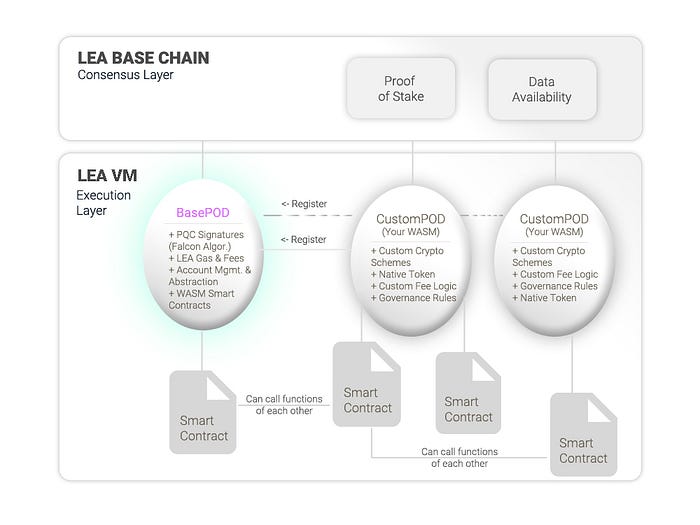
On this foundation, execution happens through Decoders. A Decoder defines what makes a transaction valid — its signature scheme, its fee logic, and its rules.
- When a new Decoder is deployed, it creates a Programmable Object Domain (POD). A POD is, in effect, a sovereign execution environment: the Decoder as its entry point, plus any number of smart contracts registered to it. Together, they form an isolated or interoperable ecosystem.
- Developers who don’t need custom rules do not need to create a new POD. They can simply deploy contracts into the basePOD, the canonical Decoder maintained by LEA. The basePOD provides standard execution logic and comes with post-quantum cryptography (PQC) built in.
This means modularity is not a barrier — it’s a spectrum. Developers can start small, deploying contracts directly to the basePOD, and move to their own PODs only when their application requires unique governance, tokens, or cryptography.
Interoperability by Design
Even though each POD is sovereign, LEA ensures that applications are not trapped in silos. All smart contracts — whether in the basePOD or in a custom POD — share a unified interface.
Through the Decoder Handshake mechanism, smart contracts from different PODs can call one another securely. Each POD enforces its own policies, but communication remains possible and verifiable. This enables:
- Cross-POD transactions that settle atomically.
- Rich ecosystems where DeFi, gaming, and identity solutions can interact without insecure bridges.
- A balance between sovereignty and collaboration: PODs choose how open or closed they wish to be.
This design makes modularity not only flexible but also cohesive, allowing diverse domains to function within a shared ecosystem.
Security Designed for the Quantum Era
Even as modularity solves today’s bottlenecks, security must look ahead. Large-scale quantum computers will one day threaten classical cryptography. For most blockchains, this is an existential risk.
LEA addresses it from the start. The basePOD employs a dual-signature model:
- Ed25519 for efficiency in everyday transactions.
- Falcon-512, a NIST-standardized post-quantum scheme, for high-value or long-term operations.
Because Decoders define signature logic, new algorithms can be adopted seamlessly. If standards evolve, LEA can integrate them through new Decoders — without requiring disruptive hard forks.
Why This Matters
The combination of modularity, interoperability, and post-quantum security reshapes what a blockchain can be:
- Developers gain choice: use the basePOD for simplicity, or launch sovereign PODs with custom logic.
- Users gain confidence that every transaction is secure — now and in the quantum future.
- Ecosystems gain the ability to scale independently yet communicate through a unified framework.
Looking Forward
The future of blockchain will not be defined by throughput alone. It will depend on architectures that enable innovation without coordination bottlenecks, ensure security across technological frontiers, and allow ecosystems to thrive both independently and together.
LEA embodies this approach: a stable basePOD for immediate use, modular PODs for sovereign innovation, and a unified interface that ensures communication across domains. A foundation built to endure — and to connect.
Support Us
Curious to learn more or get involved with the LEA ecosystem? Visit us at getlea.org for project updates, documentation, and to explore how YOU are able to participate with us together in innovative blockchain solutions.
Follow us: Facebook | Twitter | Github
